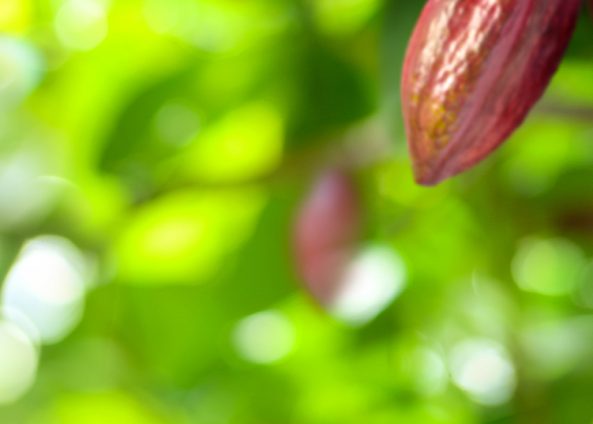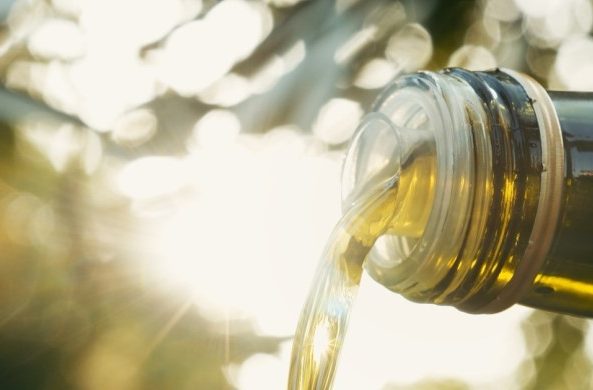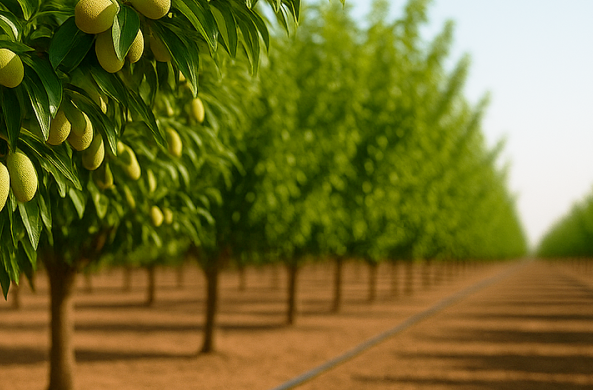
Nuts: The Cash Crop with High Returns
Nuts are a cash crop that are ideal for investment due to high returns. Almonds, walnuts, pistachio, pecans, hazelnuts and macadamia all have the following in common:
- All orchards
- All deciduous
- Generally harvested with advanced technology and little labor
- Bi-annual crop (high yield year followed by low yield years)
- Have a long shelf life helping provide stability of price
- Correct irrigation has a direct and significant impact of yield and profitability
60 Days Determines Your Yield
Don’t leave your yield to chance. You have 60 days during Stage 1 of growth to achieve your yield expectations. Drip irrigation management is critical to ensuring you grow beyond your expectations. While you may have high rainfall during the year, or attempt to rely on winter rains, if there is plant stress during Stage 1 of growth, your yield will decrease.
You cannot gain this lost yield at a later date. Therefore, careful irrigation management is critical.
Deliver Peak Water Demand for Maximum Growth
Every day of water stress = Reduced yield
When developing an irrigation system, it is important that the system can deliver the peak water demand. This is the water required on the hottest, driest day at maximum growth stage. Every day of water stress = reduced yield. Located in four global design centers, the Rivulis design team uses specialized software and skills to determine the peak demand of your crop and design a solution to meet your needs and requirements.
Peak Water Demand vs. Average Water Demand
The below graph shows the variance that can occur between the average water requirement of a crop vs. the peak water demand. The impact of the variance is crop stress and yield loss.
Chemigation
One of the benefits of drip and micro sprinkler irrigation systems is the ability to provide chemical treatment directly through the system (dependent on local legislation per country / region). For example, using a very simple calculation of number of trees and using a simple direct injection fertigation system, you can complete a chemical treatment of chloronicotinyl insecticides (neonicotinoids) in just minutes.
Direct injection of chemigation =
No sprayer
No tractor
Less labor
No tractor fuel
Wind & humidity spraying constraints reduced
Maximum Growth: Surface & Subsurface Drip
When you use drip irrigation, you have the flexibility to choose between surface and subsurface installation. Choose the option that best fits your unique needs.
Surface
Drip lines are installed on the surface and generally a heavy wall pressure compensating (PC) drip line is used. As the trees grow, so does the root zone. Because the drip line is on the surface, it is easy to move the drip line further out in accordance with the growth.
Surface Recommended Products:
Rivulis D5000 PC, Rivulis Hydro PC
Subsurface
The drip line is buried at a depth dependent on the soil condition and crop type. Although some crops such as almonds have very aggressive root systems, preventing root intrusion is managed by not allowing the soil to become deficit of water. This prevents the roots ‘chasing’ the water and therefore protects the drip line. A benefit of subsurface drip line is that it does not interfere with machinery operation. To avoid soil-suck back, anti-siphon or no-drain drip lines should be used.
Subsurface Recommended Products:
Rivulis D5000 AS, Rivulis HydroPCND
Surface Drip Line: Growing With Your Crop
Growth Stages 0-3 years:
1 drip lateral per row that is placed very close to the tree itself.
0.4 – 0.6 m dripper spacing and 1.0 – 2.5 lph flow rate depending on soil type.
To allow for future growth and water requirement, a second drip line lateral should be installed parallel on the other side of the tree. However this is not used for the first years of growth.
Growth Stages 3-10 years:
Both drip lines are moved to the middle of the root zone (0.75 – 1.0m) away from the trunk of the tree. Generally there is a correlation between canopy size and the root zone.
Both drip lines commence operation due to increased water requirement.
Growth Stages 10+ years:
Some manufacturers recommend at this stage installing an additional 1 – 2 drip lines. This is an excessive cost and can be avoided by ensuring that the initial system has capacity for growth.
Drip lines should be moved in accordance with the root zone.
Micro Sprinklers for Crop Irrigation
Micro sprinklers are most common for hazelnuts and macadamias but are also used in almonds and other nuts.
Micro sprinklers are installed on stakes or hung from tubing suspended between the trees. A major advantage of hanging sprinklers from a tube is that they do not interfere with machinery that operates on the ground. A special anti-insect option is available on Rivulis RFR and is standard on all Rivulis S2000 models. This anti-insect mechanism closes the sprinkler head upon system shut-off. In addition to protecting against insects from entering the sprinkler, it also protects the sprinkler from dust entering. The Rivulis S2000 PC sprinkler has a unique design that provides a very flat trajectory to help prevent fruit damage while also providing a large wetting diameter.
Micro Sprinkler Recommended Products: Rivulis S2000 PC, Rivulis RFR
Frost Protection: Protecting Your Yield
For nuts, the purpose of frost protection is to protect the flower and the bud setting in early spring. The frost will not harm the tree but it will have an impact on the crop for that year.
The first rule of frost protection is to choose the right area to grow that has minimal frost risk. However as this is not always possible, in fields where there is a risk of frost due to climatic conditions, micro sprinklers are the preferred option for irrigation as they also provide frost protection.
Micro sprinklers are a form of ‘active’ frost protection that release latent heat to transform water to ice.
The Rivulis design team can help calculate a frost protection system based on minimum temperature expected, crop sensitivity and available water to apply the minimum rates per hour as per the table to the right*.
Frost Protection – Recommended Products:
Rivulis S2000, Rivulis Super XL











